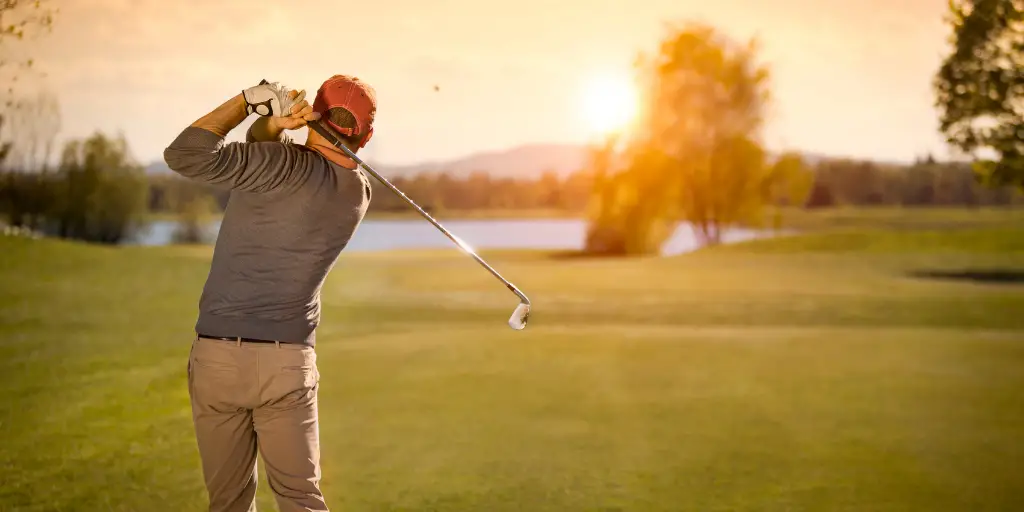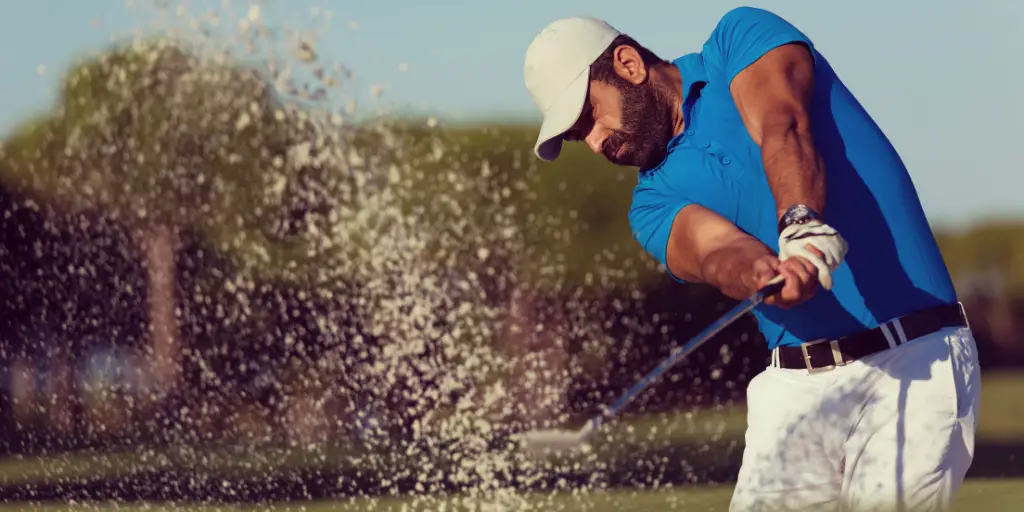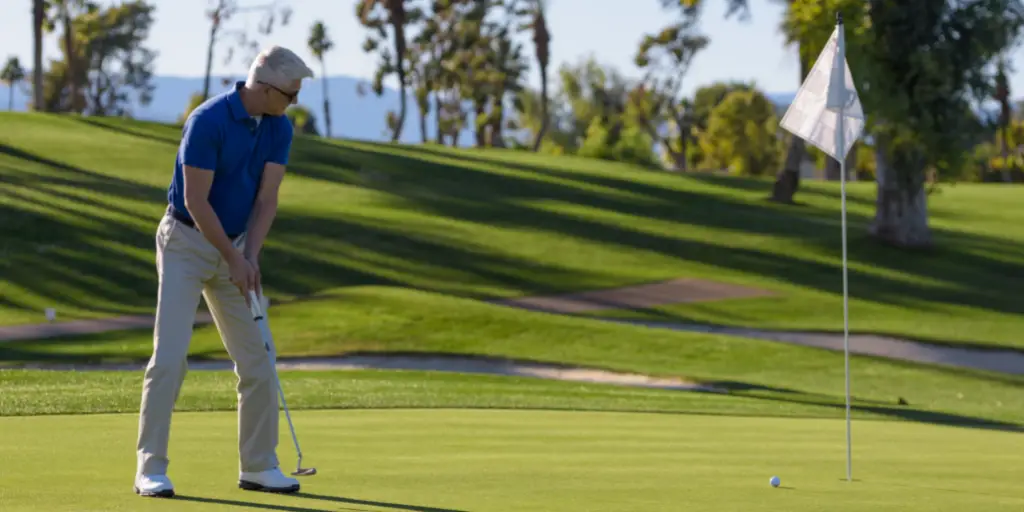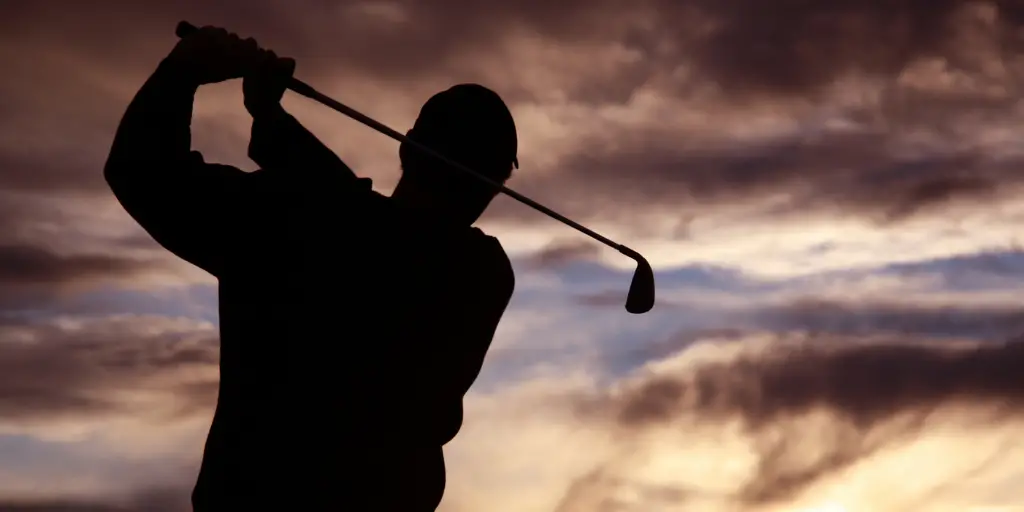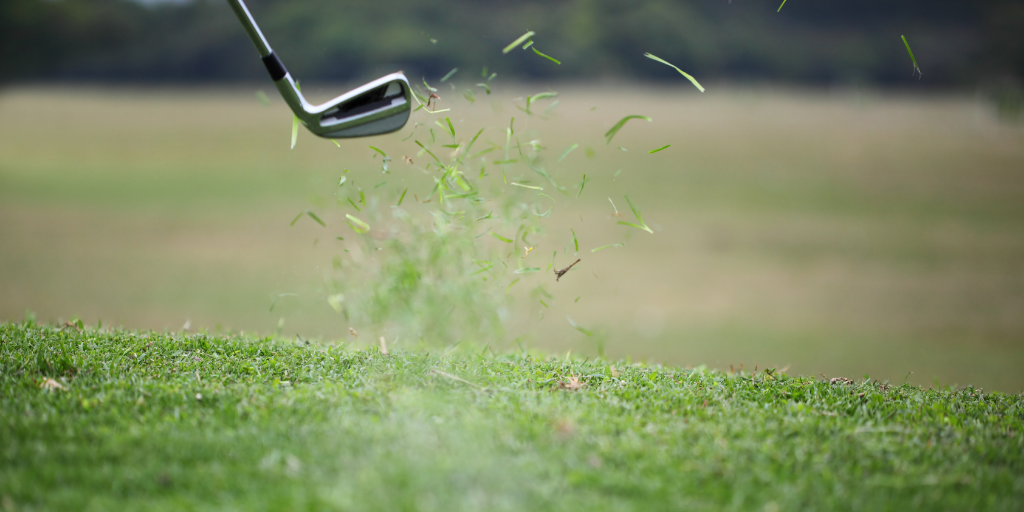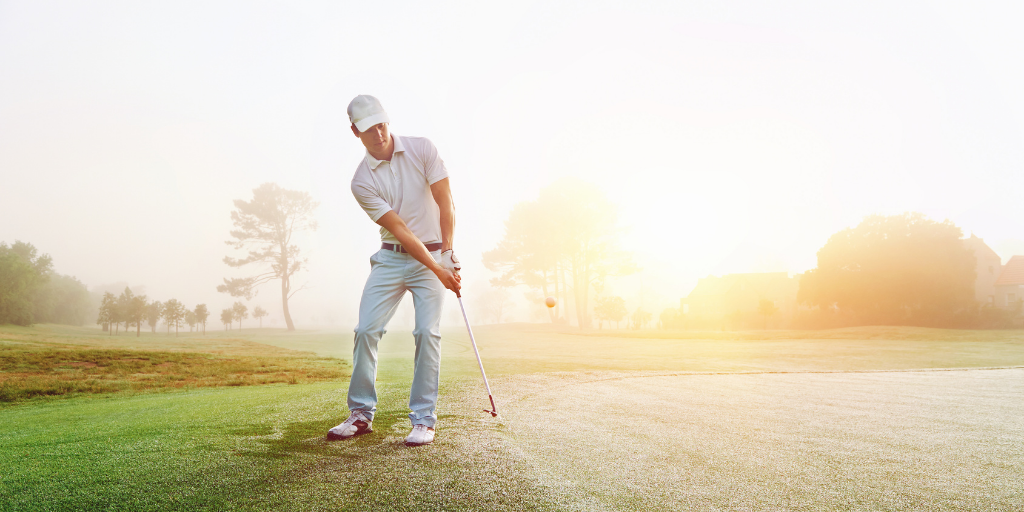Our goal is for you to have the tools you need to begin the process of hitting a fade after reading this article. It is very important to note, before mentioning anything else, I am not talking about a slice!
A slice is a mishit that travels so far right that it eats up your distance and ends up in a potentially unplayable situation. A fade is a slight move from left to right that you begin to the left of your target and end up being right on top of it.
Many golf clubs and golf balls focus on distance and try to help you keep your shots flying straight. There is a reason, however, that when you watch a tournament on television or play with a scratch golfer you see them working the ball either through fades or draws and very rarely see straight shots except for in higher lofted clubs.
Consistently hitting the ball straight is much more difficult than drawing or fading a ball to your target.
In addition, when you master the ability to work your ball in either direction, you gain flexibility in shot-making and consistency all the way around.
Hitting A Fade
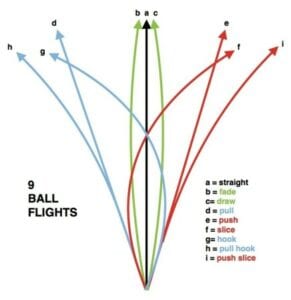
Image courtesy of thegolfacademy.org
What is a fade?
For a right-handed golfer, a fade starts to the left of a target and turns back to the right ultimately finishing on target if done correctly. By far the most common mishit that plagues golfers is the dreaded slice.
While it has the same left-to-right movement as a fade, it is not controlled and is the result of a mishit. The fade, along with a draw and a straight shot, is one of the 3 most common “full swing” shots that golfers strive for.
Golfers hit fades because they offer more control and a softer landing than either of the other 2 shots mentioned.
What causes a fade?
There are 2 major determinants of a fade:
- Your clubface at impact.
- Your swing path.
To effectively hit a fade, you need to start the ball slightly to the left of the target. If you make solid contact with the ball, the direction that your club face is pointing is the sole determinant of where your ball flight will begin.
If your clubface is pointing straight, your ball will start straight. If your clubface is pointing to the right, your ball will start right at whatever angle your clubface is pointing.
This is common sense, but some people do not realize it until it is explained to them the first time.
As I mentioned before, a fade is worked from left to right meaning that at impact your clubface should be pointed left to start the fade. The second aspect of a fade is that your swing path determines the amount of fade that you get on the ball. In general, your middle irons have about a 2-to-1 ratio of how far outside-in your swing should be.
For instance, if you are hitting a 7-iron and the club face is pointing 2 degrees to the left of your target, you need your swing path to be about 4 degrees across the ball from outside-in. Wedges start to become more like 3-to-1 while drivers and fairway woods require a much smaller swing path angle along the lines of 3-to-2 or 4-to-3.
This photo below shows what the swing path angle vs clubface angle should look like
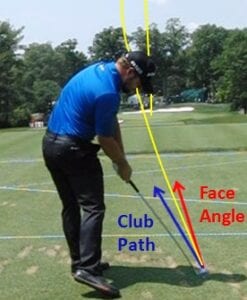
(image courtesy of Bo Knows Golf Tips)
Here’s What You’ll Need to Start Learning to Hit A Fade
Start with your 7-iron
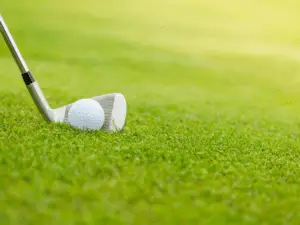
Your 7-iron is a great club to help you to learn how to hit a fade. It is easy to hit, easy to control, and you do not need a huge outside-in swing to make it happen. Close the clubface slightly at setup and swing from outside of the ball to the inside. Based on the evidence that a huge majority of players hit a slice, the outside-in swing must be one of the most common in golf.
Using Alignment Sticks
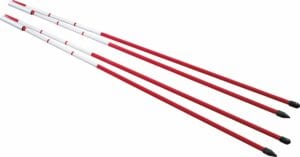
Alignment sticks are a great golf training tool that can be used to give you a visual of what an outside-in swing looks like. This tool can also help you with your alignment as you learn where to put your feet and how to aim when hitting a fade.
There are a few drills that you can run through to get more of a feel of how your body and club should look at impact to hit a fade. You can use other clubs in lieu of alignment sticks, but alignment sticks are lighter, stick in the ground more easily (yes you will need this for some of the drills), and are the perfect length for many of the drills you will do.
Click this link to see Pete Syles from golfinfoguide.com give you a tutorial on how alignment sticks could help you learn a fade.
Step By Step Instructions
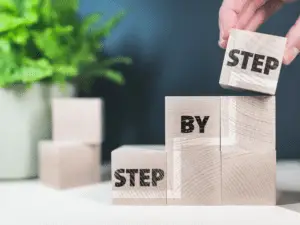
1. Setup
At setup you want to open your stance up slightly by either moving your front foot back a little or moving your back foot up a little. This helps your swing path and points you to the left of your target.
Next you want to close your clubface about 2-3 degrees depending on the club and the amount of fade you are trying to get. Remember for your mid irons, if you close the club 2 degrees you want your swing path to come in at about 4 degrees. For a driver if you close the club 2 degrees, you want the swing path to come in at about 3 degrees.
For a video showing you what your setup should like for a fade, click the link below to see Ted Norby, the Director of Instruction for the National University Golf Academy.
2. Backswing
While there are a few shots that require a deeper or shallower backswing, a fade is not one of them. You want your backswing to stay the same as it always was because this is what is comfortable and effective for you. Your swing path will be different but your backswing will remain the same.
3. Swing Path
This is the most difficult and most important aspect of your swing in your attempt to produce a fade. The swing path required to produce a fade is more natural and more common than what is required to produce a draw, but it is still difficult to get used to.
You have to come from the outside back in, and at the correct angle to produce the amount of spin needed to take the ball from its leftward projection and move it back to being on target.
To learn more about the swing path you are going for, watch this youtube clip by Piers Ward and Andy Proudman of meandmygolf.com. It is very comprehensive and even has some bloopers at the end, but the description of the swing path is really helpful:
4. Starting with half shots
It is important not to go out to the golf course tomorrow morning and think that because you watched some tutorial videos and read about how to hit a fade that you can integrate it into your golf game immediately. It will take some time.
Begin with half shots with your 7-iron. Once you begin to get the feel of the swing and begin seeing results, move up to a 5-iron and a fairway wood while still using half swings.
Eventually you will be able to make full shots and fade the ball right towards the target, but it is a process and it is worth it.
Conclusion
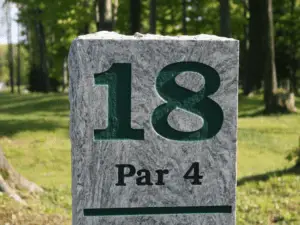
I hope you learned a lot about a fade and enjoyed the tutorials and visual aids. Golf is one of the best sports in the world, and adding a shot like the fade makes it easier to shape your shot, land the ball softly on the green, and have some of the shot-making flexibility that some of the best golfers in the world have.
If you learned from and liked this article, give us a share on social media. Comment what you liked or did not like and give us the feedback we need to give you the information you want.

